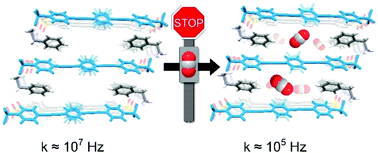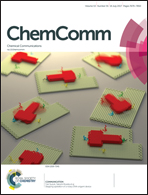CO2 regulates molecular rotor dynamics in porous materials†
Abstract
A crystalline hydrogen-bonded framework with permanent porosity, built by rod-like struts and engineered to bear ultra-fast molecular rotors between two triple bonds, offers the possibility of controlling the rotational rates upon CO2 adsorption. CO2 enters the pores from the gas phase and reduces the rotational rates from the extremely fast regime of 107 Hz at 216 K to 105 Hz. The CO2–rotor interaction was evident from the 2H NMR response to the dynamics of the rotors in contact with CO2 in the crystal structure.



 Please wait while we load your content...
Please wait while we load your content...